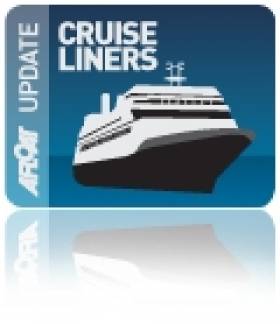Displaying items by tag: MV Explorer
Floating University Cruises To Dublin Port
#CruiseLiners - The 'floating university' MV Explorer is due to dock at Dublin Port tonight 20 September, according to The Irish Times.
Last year the cruise liner, which operates as part of the University of Virginia's Semester at Sea study programme, visited the west coast and Galway - though it had to drop anchor in Galway Bay as the 590ft long vessel was too large to enter Galway Harbour.
As previously reported, the Explorer during that same visit to Ireland had also paid a visit to Dublin Port.
Due to arrive tonight around 11pm, the Explorer is bringing 575 students from 20 different countries to Dublin Bay for a three-day stay before heading off to Morocco, Ghana, Argentina, Brazil - and even Cuba in a first for the programme, pending US approval.
The Irish Times has more on the story HERE.
West Meets East: As Semester at Sea Ship Heads for The Gathering
#SEMESTER SHIP – Having made a recent visit to Galway, the cruiseship Explorer with more than 800 students, academics and crew are on board, as previously reported on Afloat.ie, is currently heading to the opposite side of the island, with a visit to Dublin Port, writes Jehan Ashmore.
The 25,000 tonnes vessel with its floating campus is due to dock in the capital tomorrow morning at Ocean Pier. The 180m vessel, formerly the Olympic Explorer built in 2000 for Royal Olympic Cruises is currently providing a "semester at sea" (SAS) programme through a world tour.
The SAS is operated on a not-for-profit initiative for the Institute for Shipboard Education, in co-operation with the University of Virginia in the US. Students taking the educational programme had set off on the world voyage from Halifax, Nova Scotia, with the first leg to Galway.
When Explorer berths in Dublin Port, she will join the United States Navy landing ship USS Fort McHenry (LSD-43) which as previously reported on Afloat.ie had already arrived last Thursday for the American Football Week.
It was downriver from her Ocean Pier berth at the nearby O2 Arena, where last night's televised "The Gathering: Notre Dame- A Welcome Home" , a special concert which was held for fans in the Docklands venue.
Today the Emerald Isle Classic with 33,000 fans of the games two big boys, Notre Dame and the Navy, is been held this afternoon, on the far side of the Liffey at the Aviva Stadium.
After her two-day call to Dublin the Explorer continues on its global tour with calls to the UK, Belgium, Portugal, Spain, Morocco, Ghana, South Africa, Argentina, Uruguay, Brazil and Dominica.
'Floating Campus' MV Explorer to Visit Galway This Friday
#CRUISE LINERS - Galway Bay is set to welcome a visit from the 'floating campus' MV Explorer this Friday 21 August, as the Galway Independent reports.
The cruise liner, with more than 800 students, academics and crew on board, operates as part of the Semester at Sea study abroad programme which invites students from 25 universities across the Unites States to travel the world and experience its diversity.
PhD student Sarah Cosgrove of NUI Galway's Ryan Institute for marine science - who joined the cruise at its last port of call in Halifax, Nova Scotia - will talk to the visiting students about Galway, its port and the university.
At 590 feet in length, the 10-year-old vessek is too large to enter Galway Harbour so will instead drop anchor out in Galway Bay.
Its arrival follows that of two other liners, Le Diamant and the Discovery, that arrived in Galway in Friday 17 August with 1,400 passengers and crew between them. Both are set to return to the City of the Tribes next month.
The Galway Independent has much more on the story HERE.
































































